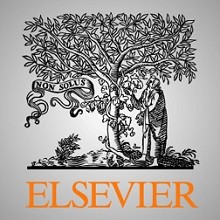
مقاله انگلیسی مهندسی نانوذرات فریت با پاسخ مغناطیسی افزایش یافته
Abstract
Keywords
1. Introduction
2. MFNPs-based magnetoresponsive effects for biomedical applications
3. Conclusion and perspectives
Declaration of competing interest
Acknowledgments
References
Abstract
One of the most attractive features of magnetic ferrite nanoparticles (MFNPs) in biomedical application is that they can mediate external magnetic field to produce local magnetic field, magnetic thermal and magnetic force effects. These generated effects can later be utilized in the diagnosis and treatment of various diseases. The application performance is mainly determined by the nano-magnetism of MFNPs. Therefore, by modulating the magnetic properties, the improved magnetic resonance (MR) signals, magnetothermal, and magnetomechanical effects of the MFNPs can be achieved. In this review, we summarize the strategies used in the engineering of MFNPs to enhance MR imaging sensitivity and magnetic thermal conversion efficiencies. We will also discuss the detailed magnetoresponsive mechanism arising from the critical magnetic properties of MFNPs. Furthermore, we will highlight the recent progresses of the engineered MFNPs in biomedical applications, with emphasis in MR signal amplification, magnetothermal, and magnetomechanical response in biomedical applications.
1. Introduction
Since ancient Greek time, lodestone, i.e., bulk magnetite (Fe3O4), has been used in the treatment of common ailments. With the advancement in nano-biotechnology, the applications of such magnetic ferrite nanoparticles (MFNPs) have evolved, which extends to the modern biomedicine and clinical study [[1], [2], [3], [4], [5], [6], [7]]. As biological tissues are transparent to magnetic fields, the most attractive advantage of MFNPs in biomedical applications is that they can complete various functions triggered by invisible, tissue-penetrating magnetic field [8,9]. For instance, natural magnetotactic bacteria build iron oxide nanoparticles (IONPs) in a chain configuration to generate a permanent dipole in their cells so as to navigate toward their favorable habitats by sensing the Earth's magnetic field [10]. These MFNPs possess good biocompatibility, which have already been used as imaging and therapeutic agents in preclinical and clinical settings [2,3,11]. As a result of the excellent magnetoresponsive properties of MFNPs, numerous exciting in vivo biomedical applications are created. These include imaging for non-invasive diagnosis of diseases [12], treatment of diseases with hyperthermia [13], magnetically driven nanorobots [14], magnetic activation of ion channel for cell signaling [15], manipulation of cell's function and fate [16,17], and so on. Despite the good establishment of these concepts, there is a significant challenge in obtaining effective MFNPs that can achieve full functionality via the efficient conversion of the external energy of magnetic field. As such, due to their poor conversion ability, this greatly hinders their transition from bench to bed.
